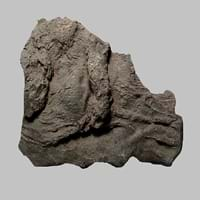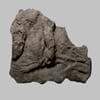Definition
During the impact melted material forming a breccia containing glass and crystal or lithic fragments together form Suevite rock.
Kenyte is a variety of porphyritic phonolite or trachyte rock with rhomb shaped phenocrysts of anorthoclase with variable olivine and augite in a glassy matrix
Origin
Canada, Germany
Mount Kenya
Discoverer
Unknown
J. W. Gregory
Etymology
No etymologies found
From the mountain ranges- Mount Kenya and is named by J. W. Gregory in 1900
Class
Metamorphic Rocks
Igneous Rocks
Sub-Class
Durable Rock, Medium Hardness Rock
Durable Rock, Medium Hardness Rock
Group
Not Applicable
Not Applicable
Other Categories
Coarse Grained Rock, Opaque Rock
Fine Grained Rock, Opaque Rock
Texture
Earthy
Glassy, Granular
Color
Black, Brown, Colourless, Green, Grey, Pink
Brown, Buff, Cream, Green, Grey, Pink, White
Durability
Durable
Durable
Scratch Resistant
Yes
Yes
Appearance
Banded
Banded and Foilated
Interior Uses
Decorative Aggregates, Homes, Interior Decoration
Decorative Aggregates, Entryways, Homes, Interior Decoration, Kitchens
Exterior Uses
As Building Stone, As Facing Stone, Garden Decoration, Office Buildings
As Building Stone, Garden Decoration, Paving Stone
Other Architectural Uses
Curbing
Curbing
Construction Industry
As Dimension Stone, Cement Manufacture, for Road Aggregate, Making natural cement, Manufacture of Magnesium and Dolomite Refractories
As Dimension Stone, Cement Manufacture, Construction Aggregate, for Road Aggregate, Landscaping, Making natural cement, Manufacture of Magnesium and Dolomite Refractories, Production of Glass and Ceramics
Medical Industry
Not Applicable
Not Yet Used
Antiquity Uses
Artifacts, Monuments, Sculpture
Artifacts, Monuments, Sculpture
Commercial Uses
As a Feed Additive for Livestock, Gemstone, Metallurgical Flux, Source of Magnesia (MgO)
Cemetery Markers, Creating Artwork
Types
Phyllosilicates, Calcite
Not Available
Features
Host Rock for Lead
Application of acids on the surface causes cloudy frosting, Available in Lots of Colors and Patterns, Dissolves in hydrochloric acid, Is one of the oldest rock
Archaeological Significance
Famous Monuments
Data Not Available
Data Not Available
Famous Sculptures
Data Not Available
Data Not Available
Formation
Suevite is a metamorphic rock consisting partly of melted material, typically forming a breccia containing glass and crystal or lithic fragments, formed during an impact event.
Kenyte is a fine-grained, hard rock which is a type of metasomatite, essentially altered basalt. It forms with or without crystallization, either below the surface as intrusive rocks or on the surface as extrusive rocks.
Mineral Content
Coesite, Quartz, Stishovite
Albite, Amphibole, Biotite, Cancrinite, Feldspar, Hornblende, Plagioclase, Pyroxene, Sodalite
Compound Content
CaO, Carbon Dioxide, MgO
Aluminium Oxide, CaO, Iron(III) Oxide, FeO, Potassium Oxide, MgO, MnO, Sodium Oxide, Phosphorus Pentoxide, Silicon Dioxide, Titanium Dioxide
Types of Metamorphism
Burial Metamorphism, Cataclastic Metamorphism, Contact Metamorphism, Hydrothermal Metamorphism, Impact Metamorphism, Regional Metamorphism
Burial Metamorphism, Cataclastic Metamorphism, Impact Metamorphism
Types of Weathering
Not Applicable
Biological Weathering
Types of Erosion
Not Applicable
Chemical Erosion, Coastal Erosion
Grain Size
Coarse Grained
Fine Grained
Fracture
Uneven
Conchoidal to Uneven
Streak
Light to dark brown
White, Greenish White or Grey
Porosity
Less Porous
Highly Porous
Luster
Earthy
Greasy to Dull
Compressive Strength
Not Available
Toughness
Not Available
Not Available
Specific Gravity
2.86
2.6
Transparency
Opaque
Translucent to Opaque
Density
2.8-2.9 g/cm3
2.6 g/cm3
Specific Heat Capacity
Not Available
Resistance
Heat Resistant
Heat Resistant, Impact Resistant, Wear Resistant
Deposits in Eastern Continents
Asia
Not Yet Found
Indonesia, Iran, Russia, Saudi Arabia, Sri Lanka, Taiwan, Thailand, Turkey, Turkmenistan, Vietnam
Africa
Not Yet Found
Angola, Egypt, Madagascar, Namibia, Nigeria, South Africa
Europe
England, France, Germany, Great Britain, Netherlands, Sweden, Switzerland, United Kingdom
Andorra, Finland, France, Germany, Great Britain, Italy, Norway, Portugal, Spain, Sweden
Others
Not Yet Found
Greenland
Deposits in Western Continents
North America
Not Yet Found
Canada, USA
South America
Not Yet Found
Brazil, Chile, Colombia, Uruguay, Venezuela
Deposits in Oceania Continent
Australia
Not Yet Found
New Zealand, Queensland, South Australia, Tasmania, Western Australia
Suevite vs Kenyte Characteristics
Though some rocks look identical, they have certain characteristics which distinguish them from others. Characteristics of rocks include texture, appearance, color, fracture, streak, hardness etc. Suevite vs Kenyte characteristics assist us to distinguish and recognize rocks. Also you can check about Properties of Suevite and Properties of Kenyte. Learn more about Suevite vs Kenyte in the next section. The interior uses of Suevite include Decorative aggregates, Homes and Interior decoration whereas the interior uses of Kenyte include Decorative aggregates, Entryways, Homes, Interior decoration and Kitchens. Due to some exceptional properties of Suevite and Kenyte, they have various applications in construction industry. The uses of Suevite in construction industry include As dimension stone, Cement manufacture, For road aggregate, Making natural cement, Manufacture of magnesium and dolomite refractories and that of Kenyte include As dimension stone, Cement manufacture, Construction aggregate, For road aggregate, Landscaping, Making natural cement, Manufacture of magnesium and dolomite refractories, Production of glass and ceramics.
More about Suevite and Kenyte
Here you can know more about Suevite and Kenyte. The life cycle of a rock consists of formation of rock, composition of rock and transformation of rock. The composition of Suevite and Kenyte consists of mineral content and compound content. The mineral content of Suevite includes Coesite, Quartz, Stishovite and mineral content of Kenyte includes Albite, Amphibole, Biotite, Cancrinite, Feldspar, Hornblende, Plagioclase, Pyroxene, Sodalite. You can also check out the list of all Metamorphic Rocks. When we have to compare Suevite vs Kenyte, the texture, color and appearance plays an important role in determining the type of rock. Suevite is available in black, brown, colourless, green, grey, pink colors whereas, Kenyte is available in brown, buff, cream, green, grey, pink, white colors. Appearance of Suevite is Banded and that of Kenyte is Banded and Foilated. Properties of rock is another aspect for Suevite vs Kenyte. The hardness of Suevite is 5.5 and that of Kenyte is 5.5-6. The types of Suevite are Phyllosilicates, Calcite whereas types of Kenyte are Not Available. Streak of rock is the color of powder produced when it is dragged across an unweathered surface. The streak of Suevite is light to dark brown while that of Kenyte is white, greenish white or grey. The specific heat capacity of Suevite is 0.92 kJ/Kg K and that of Kenyte is Not Available. Depending on the properties like hardness, toughness, specific heat capacity, porosity etc., rocks are resistant to heat, wear, impact, etc.Suevite is heat resistant whereas Kenyte is heat resistant, impact resistant, wear resistant.





